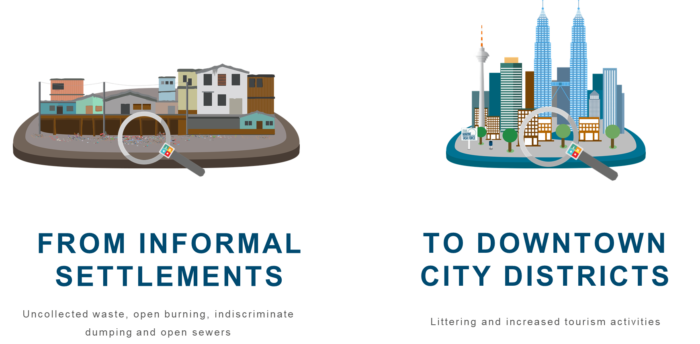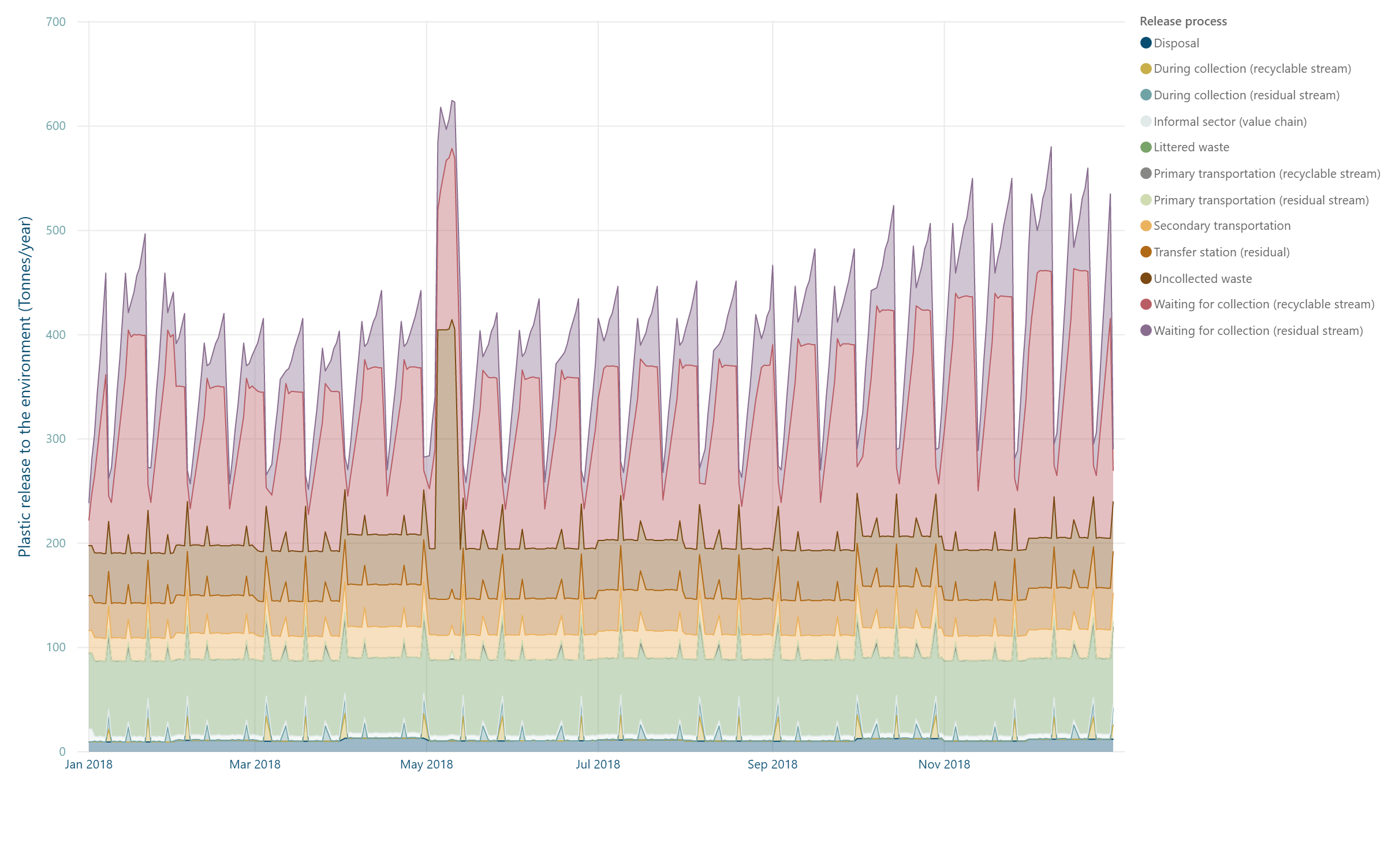Technical Capabilities
The ISWA Plastic Pollution Calculator has extensive technical capabilities focussed primarily on the quantification of plastic pollution sources and pathways.
The Calculator aims to model in a practically useful level of detail the item-specific plastic waste generation, and its subsequent movement throughout the waste management system and the environment. This includes any locations and conditions where plastic may escape into the environment and become unmanaged. Such a quantification can then be used to provide area-specific, localised and targeted engineering-based interventions.
Useful for any organisation interested in plastic pollution, such as NGOs, governments, municipal authorities, and waste management officials, the Calculator provides a thorough quantification of a locations plastic pollution. Being applicable to informal settlements in developing countries through to downtown city centres in developed nations, the Calculator encompasses all realities of plastic pollution. Whilst applied at the neighbourhood (sub-district) level so as to account for the local characteristics of the area, the Calculator is also scalable to larger regions such as state, regional or even country level.

The Calculator, whilst relatively data hungry, provides advantages over other toolkits. For example, inbuilt algorithms automatically correct the user supplied waste generation data to account for waste streams typically not measured. Similarly, waste flow are mapped at unrivalled resolutions, accounting for the exact source activity (e.g. restaurants, hotels, high-rise apartments etc.) and the specific plastic items produced (e.g. plastic bottles, carrier bags etc.).
Unique conceptual models relate the local waste management practices, infrastructure quality and socioeconomics to estimate plastic emissions (leakages) into the environment. The pathways by which these are then transported overland is then considered, accounting for geographical and meteorological conditions, as well as local infrastructure such as storm drains.
Result summaries are formulated based on the wealth of background results. These can be concise results for easy dissemination, or more complex breakdowns to allow detailed analysis and to help inform on interventions that target the plastic pollution at its source.

